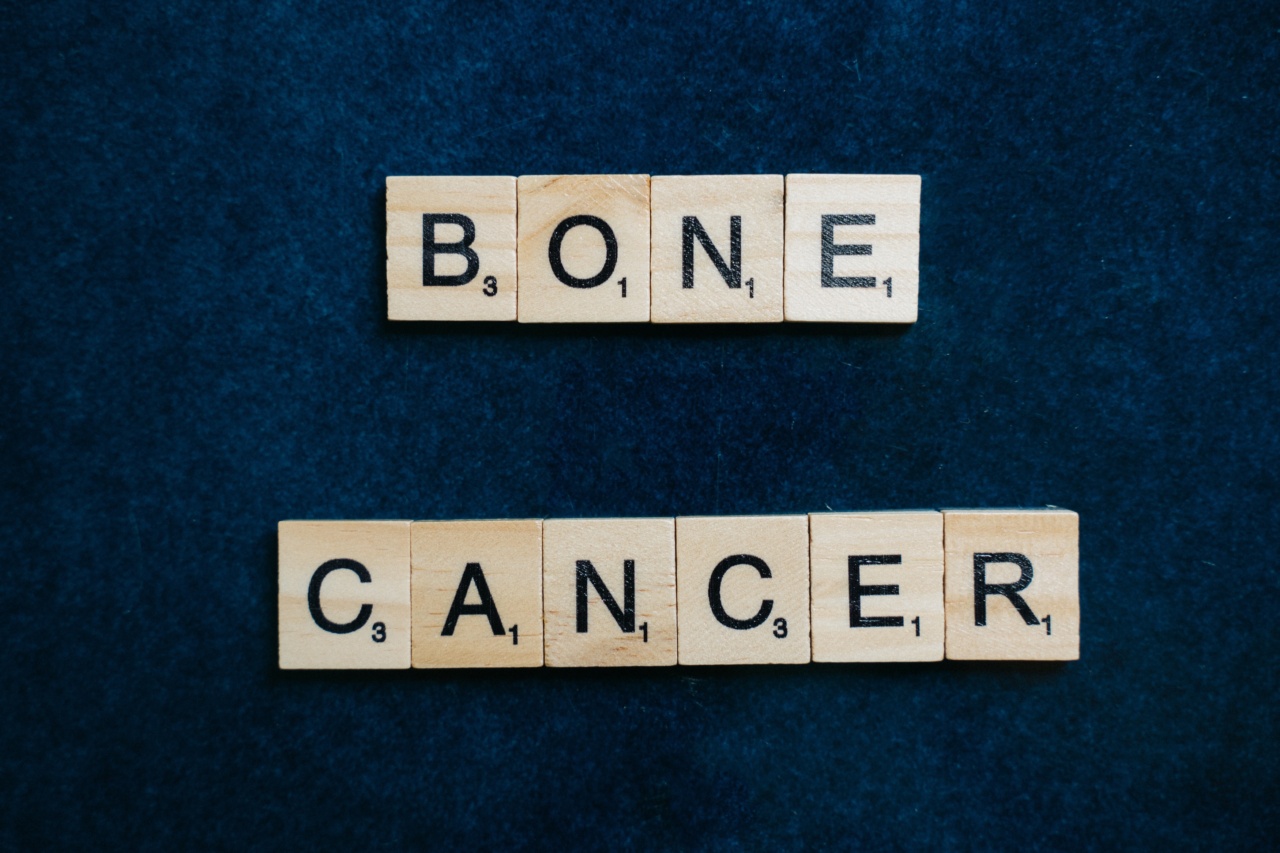Bone cancer is a type of cancer that occurs in bone cells. Though bone cancer is a rare form of cancer, it can still affect people of all ages. Bone cancer can start in the bone itself or spread from other parts of the body to the bones.
Understanding bone cancer, its symptoms, and types is crucial for early detection and successful treatment.
Types of Bone Cancer
There are several types of bone cancer that can affect the bone cells. These types of cancer are classified based on the location they start and the cell type they affect. The five main types of bone cancer are:.
- Osteosarcoma: This type of bone cancer starts in the cells that form bones. Most often, it occurs in the long bones of the arms and legs.
- Chondrosarcoma: This type of bone cancer starts in cartilage cells. It is more commonly found in the hip, pelvis, and shoulder.
- Fibrosarcoma: This type of bone cancer starts in the cells of the connective tissue or fibrous tissue. It is most common in the knee and thigh.
- Ewing Sarcoma: This type of bone cancer affects children and adolescents. It starts in the nerve tissue within the bone marrow.
- Chordoma: This type of bone cancer starts in the spine and base of the skull. It is rare and slow-growing.
Rare Forms of Bone Cancer
Bone cancer is a rare form of cancer and some types are even more uncommon than others. Some of the rare forms of bone cancer include:.
- Osteoblastoma: This form of bone cancer is rare and is most commonly found in the leg bones. Symptoms include pain and swelling in the affected area.
- Adamantinoma: This type of bone cancer affects the tibia, which is the bone in the lower leg. Symptoms include pain and swelling in the affected area.
- Aneurysmal Bone Cyst: This type of bone cancer is a non-cancerous tumor and is most common in the long bones of the arms and legs. Symptoms include pain and swelling in the affected area.
- Giant Cell Tumor: This type of bone cancer is a non-cancerous tumor and is most common in young adults. It is more commonly found in the knee.
Bone Cancer Symptoms
Early detection of bone cancer is crucial for successful treatment. Some of the most common symptoms of bone cancer include:.
- Pain in the affected area: Pain is the most common symptom of bone cancer. It is usually constant and worsens at night.
- Swelling and tenderness: The affected area may become swollen and tender to touch.
- Fractures: Bone cancer can weaken the affected bone and make it more susceptible to fractures.
- Limping: If the leg bone is affected, limping may occur.
- Bone Deformities: In some cases, bone cancer can cause the affected bone to become deformed.
Bone Cancer Diagnosis
If you are experiencing any of the symptoms of bone cancer, it is important to see a doctor immediately. A doctor may perform several tests to diagnose bone cancer, including:.
- X-rays: X-rays are often the first diagnostic test used to detect bone cancer. The x-rays may show signs of bone abnormalities or tumors.
- MRI or CT Scans: These imaging tests provide a more detailed look at the affected bone and surrounding tissue.
- Bone Biopsy: A biopsy involves taking a small tissue sample from the affected bone and examining it to determine if cancer cells are present.
- Blood Tests: Blood tests may be used to look for certain proteins or enzymes that are present in bone cancer.
Bone Cancer Treatment
The treatment for bone cancer will depend on the type and stage of cancer. The most common treatment options include:.
- Surgery: Surgery is often the first-line treatment for bone cancer. The goal is to remove as much of the cancerous tissue as possible.
- Chemotherapy: Chemotherapy is a treatment that uses drugs to kill cancer cells. It is often used in combination with surgery to prevent the cancer from returning.
- Radiation Therapy: Radiation therapy uses high-energy radiation to kill cancer cells. It is often used in combination with surgery and chemotherapy.
- Cryosurgery: Cryosurgery uses extremely cold temperatures to destroy cancer cells within the bone.
- Targeted Therapy: Targeted therapy involves using drugs that specifically target cancer cells. This treatment is often used in combination with other treatments.
Prevention and Risk Factors for Bone Cancer
There are some risk factors that increase the chances of developing bone cancer. Some of the most common risk factors include:.
- Genetic Conditions: Certain genetic conditions, such as Li-Fraumeni syndrome, increase the risk of developing bone cancer.
- Previous Cancer Therapy: People who have undergone radiation therapy for other types of cancer are at an increased risk of developing bone cancer.
- Bone Diseases: People with certain bone diseases, such as Paget’s disease, are at an increased risk of developing bone cancer.
Reducing your risk of bone cancer can be done by maintaining a healthy lifestyle, avoiding smoking and excessive alcohol consumption, and staying out of the sun when possible to reduce your risk of radiation exposure.
Conclusion
Bone cancer is a rare form of cancer, but early detection is crucial for successful treatment. Understanding the types and symptoms of bone cancer can help in the early detection and treatment of the disease.
If you are experiencing any of the symptoms of bone cancer, it is important to see a doctor immediately. By taking preventative measures and living a healthy lifestyle, you can reduce your risk of developing bone cancer.























